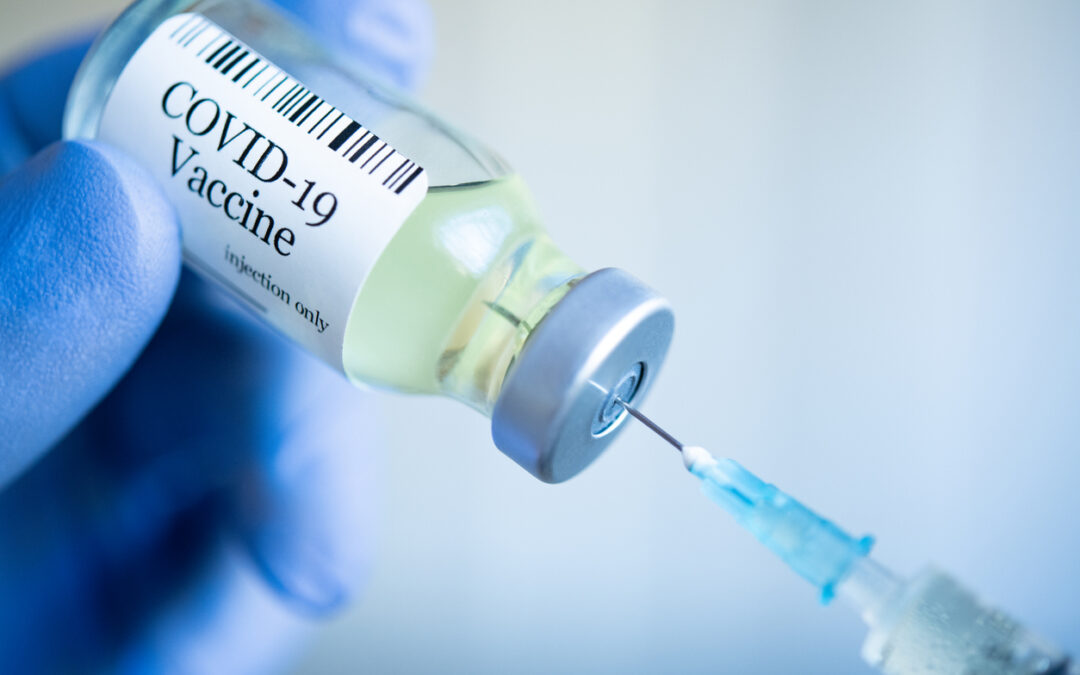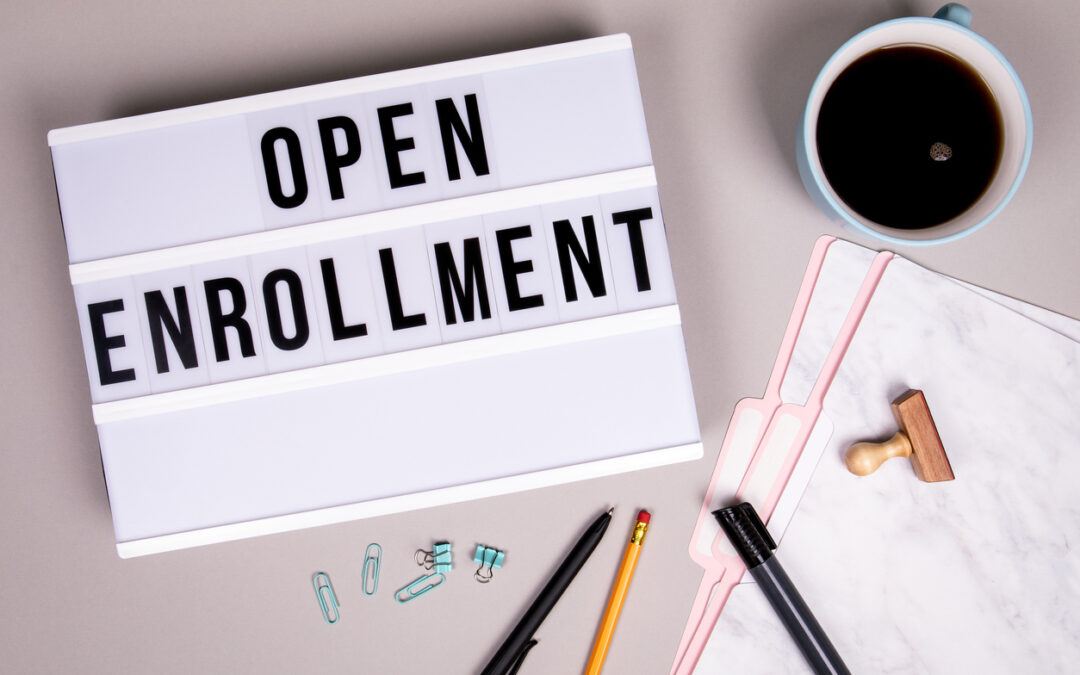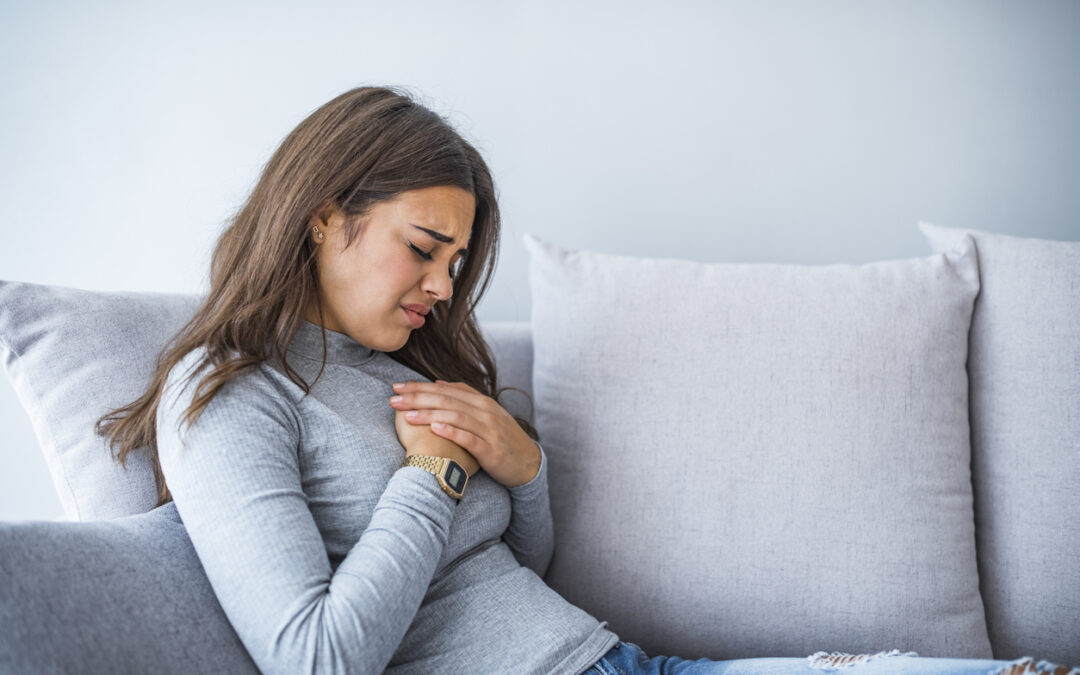
by Jen Owen, N.P. | Aug 27, 2021 | Integrative Medicine, Mind-Body Medicine, Seasonal Health
For years, I’ve been checking hormone panels for females experiencing many different hormonal symptoms. Overall, the most common pattern I’ve seen is referred to as estrogen dominance. The estrogen level is normal while the progesterone level is low. This creates symptoms such as bloating, breast tenderness, low sex drive, headaches, irregular periods, decreased sex drive, mood swings, fatigue, trouble sleeping, weight gain around the abdomen and hips, foggy thinking & memory loss, and PMS.
This pattern often occurs when the person is experiencing a higher-than-normal stress level. Because progesterone naturally provides some of our cortisol (stress-managing hormone), during times of increased stress, the body will “steal” progesterone to make more cortisol.
I’m very used to seeing this and treating this.
What I’m not used to seeing is a pattern that has become quite prevalent over the past 1.5 years during the pandemic and other issues of these times.
In almost every hormone panel I’ve checked, another hormone is elevated: DHEA.
DHEA is short for dehydroepiandrosterone (D-hi-dro-epp-E-an-dro-ster-own), a hormone made by the adrenal glands located just above the kidneys. Of the more than 150 hormones made by the adrenal glands, the most abundant is DHEA. DHEA is generally converted into testosterone and estrogens.
Most of the time, when I check this hormone, it’s low. I’ve supplemented it many times in females to increase low testosterone and low estrogen.
Because DHEA is also produced from the ovaries, in the past I would see elevated DHEA associated with abnormal hair growth (think beard), acne, and PCOS.
Not now.
DHEA is appearing high across the board and not just a little high, it’s often double or triple the level it should be, without any of the usual and expected symptoms.
Now, this is not all bad news. Some studies suggest that DHEA may elevated as a counterbalance to elevated cortisol, so it’s likely a healthy adaptive response by the body.
At the same time, it means that the body is overloaded with stress hormones, and it’s working diligently to manage this and bring the body back to balance.
I’ve talked a lot about managing stress since COVID began. If you missed my previous posts, see the bottom of this page.
During the first year of the pandemic, I gave everyone a pass. I appreciate personally how hard it’s been to adapt to all of it; how challenging it’s been to eat right, find new ways to exercise, and avoid getting into negative habits to help manage our stress.
Now, we must face the reality that not much is likely to change anytime soon. We have to find ways to adapt, to manage our stress so that our bodies don’t take the toll from all of this.
We have to find new ways to experience joy, appreciation, love, and freedom.
When people come to see me, I can feel how much they want a quick fix to what they’re feeling. It’s frustrating to hear that stress is the underlying cause of their symptoms.
Yet, here we are and it’s been true for almost everyone I’ve seen.
The good news is that my stress-management toolkit is deep and when my patients implement the plans we develop together, they feel better.
Start with one thing…what’s the one thing that you could change in your life right now, that if you changed it, it would make a really big difference? Do that first and let it be for a few weeks. Then, work with the next thing. Trying to make a bunch of changes all at once simply creates more stress and likely, more DHEA.
If you’d like my help, schedule an appointment here.
Check out these articles to understand the stress response more fully and for more ideas of how to manage it:
Are You in Fight-or-Flight or Rest-and-Digest?
Self-Care for Stressed Times
Health Basics Check-in
Stop and Breathe…
How to Handle the Strain and Drain
My Top 5 Herb Choices for Stress
Exercise Can Be Fun
5 Tips to Protect Your Energy

by Jen Owen, N.P. | Mar 4, 2021 | Integrative Medicine
I don’t know about you, but for me, getting regular exercise has been one of the challenging parts about this pandemic. Pre-COVID, I had a regular routine of attending a Nia dance class three times per week. On the other days, I would walk or do a pilates video or hula hoop in my yard.
Without my regular class routine, I’ve had trouble having any consistency. I’ll get all motivated on Monday and by Tuesday, I’m back watching Netflix during my regular exercise time. Sound familiar?
The things I’m most consistent doing regularly these days are the ones that feel more like having fun. I thought you might need more fun with exercise, too, so I created this list for you:
“Fun” Exercise Ideas:
Dance to your favorite tunes
Play Wii games
Hike in nature
Rough house with your kids
Play on a playground
Play a game you played as a kid (hide-and-seek, kick-the-can)
Do sit ups or push ups on commercials during your favorite show
Climb a tree
Play frisbee
Hula Hoop
Carry your kids around on your back
Geocaching
Jump rope
Hopscotch
Slacklining
Jump on trampoline or rebounder
Jumping Jacks
Biking
Skiing or Snowboarding
Kayaking
Have sex
Yoga
Another thing I’ve been doing is meeting friends for masked walks outside. Wet get to hangout safely, while walking and talking.
I hope this helps to bring a little inspiration to your body movement ideas.
Remember, it doesn’t have to be perfect, just do something, and HAVE FUN!
What other ideas do you have?
Post them below.

by Jen Owen, N.P. | Jan 28, 2021 | Integrative Medicine
I know that the COVID-19 vaccine has brought up a lot of questions and concerns. We’re not used to being treated with anything that doesn’t go through years of trials.
I get it. I had my concerns as well.
And, as more and more people have become vaccinated, I’ve felt much better. I’ve had both doses of the vaccine myself.
I don’t believe in any of the conspiracy theories and I also know that we’ve been making vaccines for a very long time. I’ll leave it up to you as far as what you decide to do for yourself and your family.
If you do choose to receive the vaccine, I thought it might be helpful to know what ingredients are actually in the 2 approved vaccines, and how you might give your body a little extra support before and after the injection.
Update 2-25-21: The one dose vaccine is now approved, but isn’t covered in this article.
Active Ingredient in Both Vaccines (Moderna & Pfizer):
Messenger ribonucleic acid (mRNA)
The mRNA molecules contain the genetic material that provide instructions for the body on how to make a viral protein that triggers an immune response. The immune response is what causes the body to make the antibodies needed to protect from getting infected if exposed to the coronavirus.
After injection, the mRNA from the vaccine is released into the cytoplasm of the cells. Once the viral protein is made and on the surface of the cell, mRNA is broken down and the body permanently gets rid of it. The mRNA doesn’t enter the nucleus of cells so there is no chance of it altering DNA.
Lipids:
Lipids are present in both vaccines to protect the mRNA and provide somewhat of a “greasy” exterior that helps the mRNA slide inside the cells.
Lipids in the Pfizer vaccine:
~(4-hydroxybutyl)azanediyl)bis(hexane-6,1-diyl)bis(2-hexyldecanoate)
~2[(polyethylene glycol)-2000]- N,N-ditetradecylacetamide
~1,2-distearoyl-sn-glycero-3-phosphocholine
~cholesterol
Lipids in the Moderna vaccine:
~SM-102
~polyethylene glycol [PEG] 2000 dimyristoyl glycerol [DMG]
~cholesterol
~1,2-distearoyl-sn-glycero-3-phosphocholine [DSPC]
Salts:
Salts are present in vaccines to balance their acidity.
Salts in the Pfizer vaccine:
~potassium chloride
~monobasic potassium phosphate
~sodium chloride
~dibasic sodium phosphate dihydrate
Salt in the Moderna vaccine:
~sodium acetate
Other:
Other ingredients in the Pfizer vaccine:
Sucrose is present to help the molecules keep their shape while frozen.
Other ingredients in the Moderna vaccine:
The following ingredients are present to work together to maintain the stability of the vaccine after it’s produced:
~tromethamine (acts as a buffer)
~tromethamine hydrochloride (acts as a buffer)
~acetic acid (like vinegar; maintains the pH)
~sucrose (help the molecules keep their shape while frozen)
Ingredients NOT found in either vaccine:
~Fetal cells
~Blood products, like red blood cells, white blood cells, plasma or platelets
~COVID-19 virus cells
~Mercury
~Egg
~Latex stoppers
~Pork products
~Preservatives
~Microchips
How to support your body before & after
Be aware of possible Side effects:
~Injection site reactions: pain, tenderness and swelling of the lymph nodes in the same arm of the injection, and redness.
~General side effects: fatigue, headache, muscle pain, joint pain, chills, nausea, and vomiting.
More severe reactions have been rare and would resemble an allergic reaction like shortness of breath, swelling of face and throat, rapid heartbeat, rash, or weakness.
Support your immune system and don’t over support
You want your immune system to activate somewhat in order for the vaccine to do what it’s intended to do. At the same time, you don’t want to over support and cause an overreaction. Yes, certain herbs and supplements activate the immune system, so be careful with those.
Easy Support Before and after the vaccine:
First, from what I’ve been reading, it’s important not to take anti-inflammatory medications before the vaccine. Examples include, ibuprofen (Advil) and naproxen (Aleve). You want your body to have a small reaction to the vaccine. It’s thought that these medications might dampen your antibody response. Acetaminophen (Tylenol) might be preferred if your pain or discomfort aren’t tolerable as it doesn’t have as much of an anti-inflammtory effect.
I want to be clear that none of these suggestions have been studied in connection to the COVID-19 vaccines. I’m basing these suggestions on my experience and expertise alone and sharing what I did for myself. As always, this blog is for educational information only
1. Vitamin C:
Vitamin C is known for its assistance in both supporting the immune system and assisting the body with detoxification. It’s also a natural antihistamine, so could help avoid allergic reactions.
I took 700mg of Buffered Ascorbic Acid (Vitamin C designed to be easier on the gut) every hour for 5 hours before getting the vaccine and for 5 hours after.
2. N-acetyl cysteine (NAC):
NAC promotes the production of glutathione, one of the master detoxifiers in the body. NAC might help the body release what’s not needed from the vaccine.
I took 500mg of NAC for 5 days after the getting the vaccine doses.
3. Arnica tablets:
This is the one thing I didn’t do that I wish I had done after the first vaccine.
Arnica helps avoid bruising after an “injury”.
My main side effect of the first vaccine was arm pain. I did use it after the 2nd and I do think it helped my arm be not quite so painful.
4. Epsom salts:
Get in a salts bath right away. Epsom salts relieve muscle pain, eliminate stress in the body, and might help with detoxification.
I did this after both doses and I think it helped to lessen my symptoms.
This blog talks more about the benefits of Epsom salts.
5. Prepare your immune system now:
The tips in this article still stand. It might be a little while before you can get your vaccine. Get your body ready now.
**Update after 2nd vaccine:
I highly recommend planning a rest day the day after you receive the 2nd dose. Despite all my interventions, I still felt run down and had some sweats. It wasn’t too bad, but I appreciated having the day off to rest.
If you need help getting your body ready, schedule your visit now.
I’d love to hear other things you’re doing or have done to prepare and support your body with this vaccine. Please comment any thoughts below.

by Jen Owen, N.P. | Dec 3, 2020 | Integrative Medicine, Seasonal Health
Written by Jen Owen, Nurse Practitioner
Most people don’t know that you actually can’t make vitamin D from the sun unless it’s at a 45 degree angle to the earth. This means that in most areas from October to April, you won’t be able to increase your vitamin D from getting sunlight.
So, it’s a very good time of year to have your healthcare provider check your vitamin D level. I like my patients to have a level of at least 60 going in to winter. If you don’t know your level, it’s time to find out!
Vitamin D is a steroid hormone, not really a vitamin. We make vitamin D from direct sunlight and we can also get some from vitamin D enriched foods, fish, algae, and supplements.
You probably know that vitamin D is important for bone health. Research on vitamin D is showing that it may also be very important for avoiding certain cancers, such as breast, colon, prostate, ovarian, esophageal, and lymphatic (wedmd.com). Its’ proving to be a factor in cardiovascular disease and has even been shown to lower blood pressure. Deficiency of vitamin D is often a factor in autoimmune diseases. And, the research from COVID-19 cases is showing that those with an optimal vitamin D level at onset of symptoms have shorter and milder cases.
When I first checked my family years ago, we were all dramatically low. This was particularly worrisome for my growing son. We starting taking a low amount of vitamin D during the summer and higher amounts in the winter. Most people can use a dose of around 2000iu daily, but I seriously recommend having your level checked and then rechecked once you are taking the supplement. Vitamin D toxicity does exist, so it is best if your level is monitored.
With all the proven and likely benefits of vitamin D, why not make sure yours is optimal? Please use the comment section below for your thoughts and questions and please share with your family and friends, as vitamin D deficiency is extremely common.

by Jen Owen, N.P. | Nov 4, 2020 | Integrative Medicine, Seasonal Health
Welcome to this week’s topic about finding the best health care plan to support your desire for integrative care.
There are 5 main things you’ll want to keep in mind if you have the option to switch health insurance plans during this open enrollment period from November 1-December 15:
First: Are Your Preferred Providers Covered In-Network?
Check to see that the providers you actually want to work with are covered by your plan.
When you are given the list of possible plans either by your own search, the marketplace, or your agent, be sure to search for each provider you want to see in the provider directory.
Don’t forget to look for your alternative care providers, such as your chiropractor, acupuncturist, and massage therapist.
I did a live video about this on my Wellness Wednesdays Facebook Live. Click here to watch it.
Second: What Labs Are Covered?
Look into what lab tests are covered by your insurance. Usually this is a very small amount of labs, like cholesterol and blood sugar.
Find out which laboratory companies are the preferred options for each plan. Do these work well with your primary and specialty care providers?
Are you interested in getting specialty testing like a food sensitivity panel? Does the insurance plan you’re considering work well with specialty testing companies?
Third: Are “Alternative” Treatments like Chiropractic or Acupuncture Covered?
Many plans offer a certain number of these types of visits. How about the one you’re considering?
What is your co-pay for these services?
Is the plan more expensive every month because it offers these services? Would there be less cost to you if you paid out of pocket versus paying extra for this coverage?
Fourth: What Medical Care Do You Foresee Needing Next Year?
Will you simply be using your insurance for your wellness checks or do you know you need an expensive procedure?
If you’ll be seeing your primary care provider only once or twice to get your annual exams and screenings and don’t plan on much else, a high deductible plan might make sense.
This could free up cash-flow for specialty care and testing.
But, if you know you need a surgery or something else with a higher cost, it might make more sense to pay a higher monthly fee with a lower deductible.
Fifth: Could Working With an Agent Alleviate Stress For You?
A few years ago, I found an amazing agent to help me navigate the healthcare maze. She’s been particularly helpful with options for my small business.
Having an agent is great for objective advice and to make sure you know all your options.
A good agent will present you with the very best options for you and you don’t pay them anything.
If you want to get in touch with my agent, she is Rachelle Thayer of Northwest Strategic Insurance Advisors.
What other questions do you have? Comment below and let me know and share this post with friends who might also need this information.

by Jen Owen, N.P. | Oct 28, 2020 | Integrative Medicine
Instead of saying the same things I always say about the work I do, I thought I’d give you an example of how integrative medicine really works, so you can see how it could benefit you or those you love.
Heartburn and reflux are extremely common symptoms. According to the American College of Gastroenterology, it’s estimated that more than 15 million American suffer with heartburn and/or reflux symptoms every day. That’s a lot of folks!
Conventional Approach
If you were to go to a mainstream western medical provider with the complaint of heartburn, there’s a very high chance that your treatment would consistent of one thing: a prescription for a medication from a class of drugs called proton-pump inhibitors (PPIs). Commonly prescribed PPIs include, omeprazole (Prilosec), esomeprazole (Nexium), lansoprazole (Prevacid), rabeprazole (AcipHex), and pantoprazole (Protonix). Many of these are also available over-the-counter.
I know this because that 15 million people with heartburn statistic you read above is generated by the number of people taking one of these medications every day.
If you’re lucky, this conversation might also include advice to eliminate a few common irritating foods, such as coffee, tea, and soda, and you might be instructed to elevate the head of your bed while you sleep.
And, that’s it. You’re out the door and on your way to starting a drug that’s extremely difficult to discontinue down the road. I won’t go into all the physiology here, because that could be an hour lecture on its own. I will tell you this, PPIs change the physiology of the gut and when you want to stop taking these drugs, the rebound heartburn is usually worse than what you had when you started out in the first place.
*Please note that I’m talking about mild to moderate cases here. More severe cases could require further testing and exploration to be certain nothing more serious is going on.
Integrative Medicine Approach
First
Avoid PPIs if at all possible. (If heartburn has been going on for a while, there is a risk to the tissues of the esophagus. Very rarely we might give a PPI for 2 weeks to calm things down, which was actually the original intention of this drug).
Other medications for the gut such as famotidine/ranitidine or plain old antacids like Tums can be helpful for in the moment times to avoid misery while we sort out what’s really going on. These would also be used sparingly and are easier to stop taking.
Second
Consider complete stool analysis to find the true cause of the symptom. It might be that the person doesn’t have enough stomach acid to break down fats and proteins and not that they have too much
There might also be inflammation, an imbalance in good and bad bacteria, or a lack of digestive enzymes to break down carbohydrates.
A stool analysis takes out the guessing game and gets down to the physiological facts.
We can then recommend the exact supplements and herbs needed to heal the issue for good.
Third
Consider food allergy and food sensitivity testing. If we can find out the exact foods causing symptoms, then why not do it?
Food elimination diets can feel very oppressive and can be hard to follow. Once you see it on paper, it’s much easier to avoid the foods that could be causing your symptoms.
Fourth
Add demulcent herbs like marshmallow root, licorice root, or slippery elm. I often give these herbs as powders to be taken several times a day. They soothe and heal the gut lining since it’s probably quite irritated at this point.
Fifth
Take a hard look at the person’s stress level. When you’re stressed, you can live in fight-or-flight mode a good part of the time (read this full article here to learn more about this). This causes a slowing of digestion which means that food might sit in your stomach longer than usual creating the heartburn symptom.
Addressing stress is often the most powerful treatment for all digestive issues. In integrative medicine, we take time to talk in detail about this and determine the best strategy for overcoming stress. Suggestions might include quiet time/meditation, Emotional Freedom Technique (EFT), removal of the stressful situations from the person’s life, if possible, counseling, etc.
We can do all the testing in the world and spend hundreds of dollars on supplements, but if the problem is stress, we will only make a small impact on resolving heartburn for good.
So, there you go. That’s an example of what a consultation might look like with me. For every symptom, there’s a scientific look at physiology as well as a compassionate look at lifestyle and life circumstances.
I hope that helps you understand how integrative medicine might be a better option for people than simply being prescribed a medication to make the symptom seem like it’s gone.
As always, and in accordance with our Terms of Use (below), this blog is not meant to serve as medical advice and is to be used for educational purposes only. We never recommend stopping a medication or making changes to your health regimen without the advice of a licensed medical professional.
If you want that professional to be me, click here to schedule and be sure to share this article with others in your life who might need a more integrative approach to what they’re experiencing.







Recent Comments